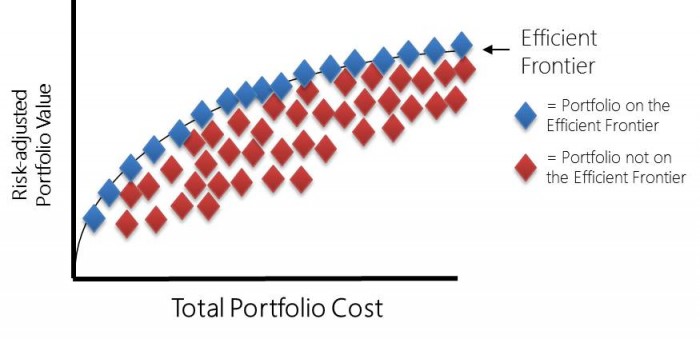Portfolio optimization is one of the core processes of portfolio management. In order for organizations to drive greater value from their portfolio management processes, they must learn how to optimize their project portfolio. To optimize means to “make the best or most effective use of a situation, opportunity, or resource (Dictionary.com).” Optimizing a project portfolio is to construct an optimal portfolio given current limitations and constraints. An “optimal” portfolio for your organization will depend upon the goals of your portfolio. Not every organization will optimize their portfolio in the same way, but there are four basic types of portfolio optimization:
1) Cost-Value Optimization: this is the most popular type of portfolio optimization and utilizes efficient frontier analysis. The basic constraint of cost-value optimization is the portfolio budget.
2) Resource Optimization: this is another popular way of optimizing the portfolio, and utilizes capacity management analysis. The basic constraint of resource optimization is human resource availability.
3) Work Type Optimization: this is a lesser known way of optimizing the portfolio, but corresponds to a more common term, portfolio balancing. The basic constraints of work-type optimization are categorical designations.
4) Schedule Optimization: this type of optimization is associated with project sequencing, which relates to project interdependencies. The basic constraints of schedule optimization are project timing and project dependencies.
- Prioritize Projects With A Scoring Model - October 11, 2018
- A Guide to Building a Project Prioritization Scoring Model - September 4, 2018
- Know The Difference Between Work Intake Versus Stage-Gate - April 1, 2018
